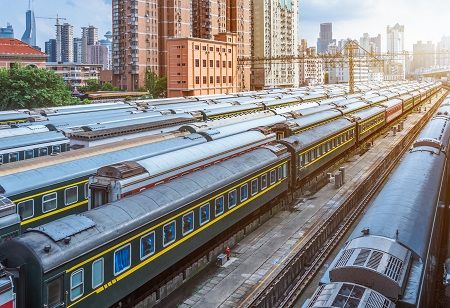
The Indian Railways is on track to surpass its goal of establishing 100 Gati Shakti Cargo Terminals (GCT) ahead of schedule. As per officials familiar with the progress, 60 terminals operating under the public-private partnership (PPP) model are already up and running, with the remaining 40 expected to be operational by the end of the current fiscal year.
These terminals play a crucial role in handling bulk cargo for businesses interconnected with the Indian Railways. They focus on non-passenger commercial activities such as freight transportation and are established under a new policy aimed at leveraging unused railway land for monetization.
Once 100 terminals are operational, the target for Gati Shakti Terminals will be increased to 200, according to a senior official.
The government had initially aimed to establish 100 Gati Shakti Terminals within a five-year period, as outlined in the Union Budget 2022-23.
These initiatives align with efforts to promote the containerization of domestic cargo, facilitating its transportation by rail. An investment of Rs 5,374 crore has already been allocated for the operational Gati Shakti cargo terminals.
In response to inquiries about freight priorities for the Indian Railways, the official emphasized the importance of prioritizing heavy goods like coal and cement over lighter goods such as electronics and clothing. The focus is on increasing containerization for lighter goods to enhance operational efficiency and speed up handling processes.
Currently, heavy goods are transported via dedicated freight trains, while lighter goods are carried in smaller quantities alongside passengers. Transitioning to containerization will enable the railways to transport larger volumes of lighter goods more efficiently, leading to better-planned services.
We use cookies to ensure you get the best experience on our website. Read more...